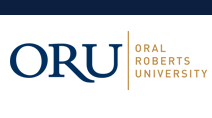Abstract
This article examines Korean nationalism in Cool-Jae Huh’s Missa Arirang; this sense of nationalism is an extension of a movement that began in the late 19th century. Missa Arirang utilizes elements from Arirang, a popular Korean folk song, in the context of a Missa, or Mass; the work consequently follows the typical structure of a Mass Ordinary. The first movement, Kyrie, morphs from Western to contemporary Korean style using predominantly Western techniques. The Gloria, which follows, symbolically brings peace between two feuding provinces by blending together their respective Arirang traditions, and the Credo continues to allude to provinces by using the Jeongsun-arirang variation, meant to symbolize the mountainous region of Korea. The Sanctus movement uses a fast tempo and uses the Shingosan-taryung variation. Perhaps the most interesting movement, the Agnus Dei, incorporates both the traditional Korean operatic tradition and funeral service.
The style of the Arirang varies between provinces and provides a glimpse into the lifestyle of each. Huh’s style in Missa Arirang points back to the nationalist reunification movement that has dwelled in Korea for many years; the composer appears to be advocating peace in his work. This shows that Missa Arirang is a valuable addition to the ethnic Christian choral repertoire because it contains rhythmic challenges with different types of rhythm, uses multicultural folk song modes and scales, and is a sacred major work using secular music and transforming it into religious music.
Creative Commons License

This work is licensed under a Creative Commons Attribution-NonCommercial 4.0 International License
Recommended Citation
Kang, I. (2019). Missa Arirang: A fusion of Korean and Western music for mixed choir, changgo, or any drum ad libitum: pianoforte. Journal of the Scholarship of Teaching and Learning for Christians in Higher Education, 9(1), 15-21. https://doi.org/10.31380/sotlched.9.1.15


